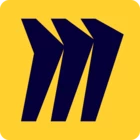I have this dream of being able to fluidly and seamlessly present and work with a group using Miro and Zoom, and what I would really like to do is to use both touch to navigate the Miro workspace, and a pen or stylus to write and draw, just as I would on an actual whiteboard.
I'm hoping for a single interface to address both.
I have tried using a “standard” touch screen monitor, but found the one I tried was only sensitive to a finger tip and the drawing/writing detail was not fine.
I have a Wacom Intuos tablet, but have found Palm Rejection with this tablet is not supported in the Miro interface. When using the stylus I have to turn off Touch manually with a switch on the side of the tablet otherwise when I rest my hand on the tablet to draw, it zooms and pans the Miro workspace unpredictably. I find this is clunky and slow when I am trying to get into the flow of working and presenting to a group.
My current workaround is to use a mouse for navigation, and then the tablet for writing. I find this slow and cumbersome for me to switch modes, plus each time I switch it takes me time and focus to sync my brain between drawing on the tablet surface and seeing where the marks align on the screen.
It’s hard to get into a flow state with this attention to manually switching modes.
Is anyone else successfully using touch and pen/stylus while facilitating collaborative groups? If so, what is your hardware setup?


